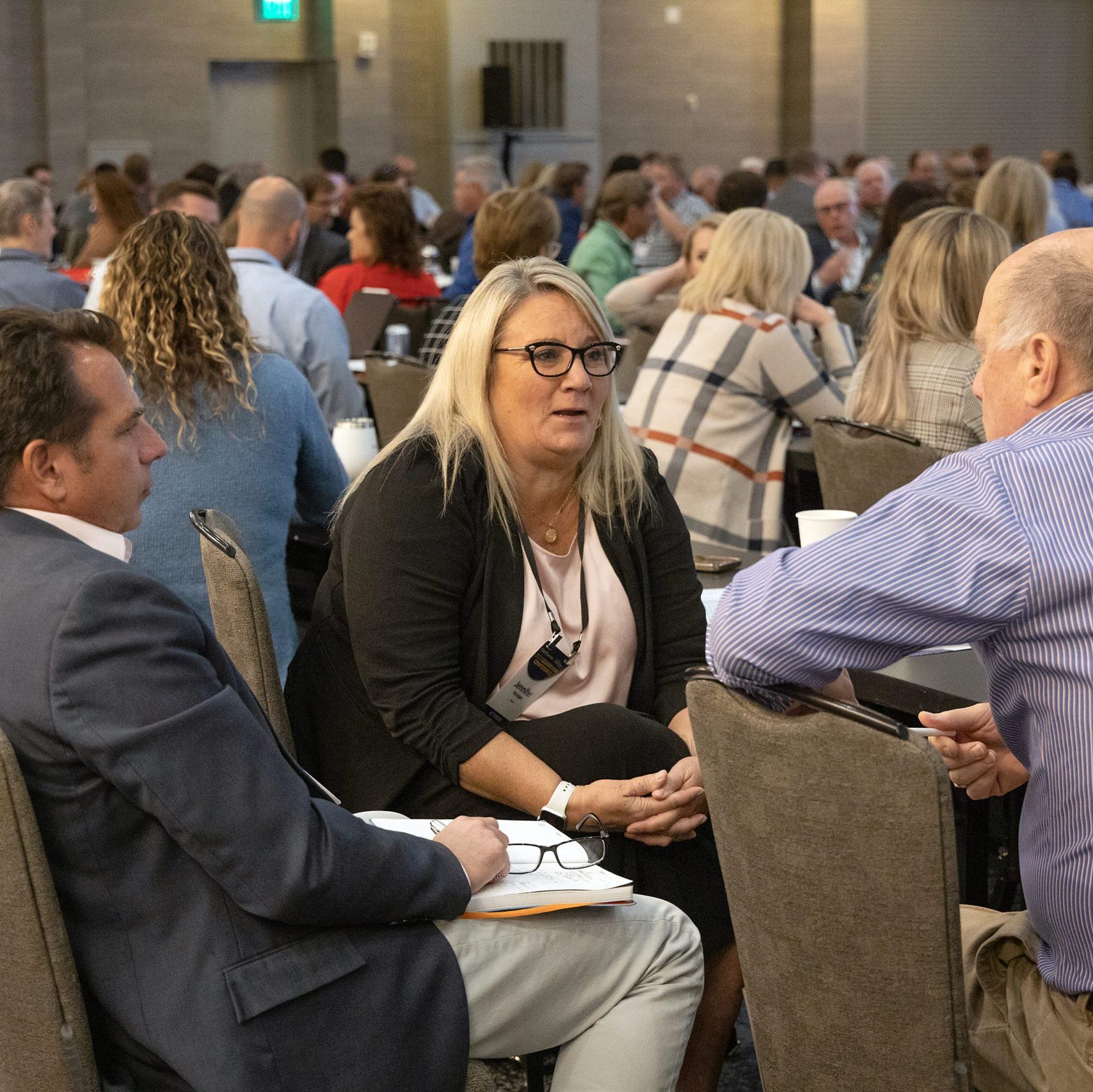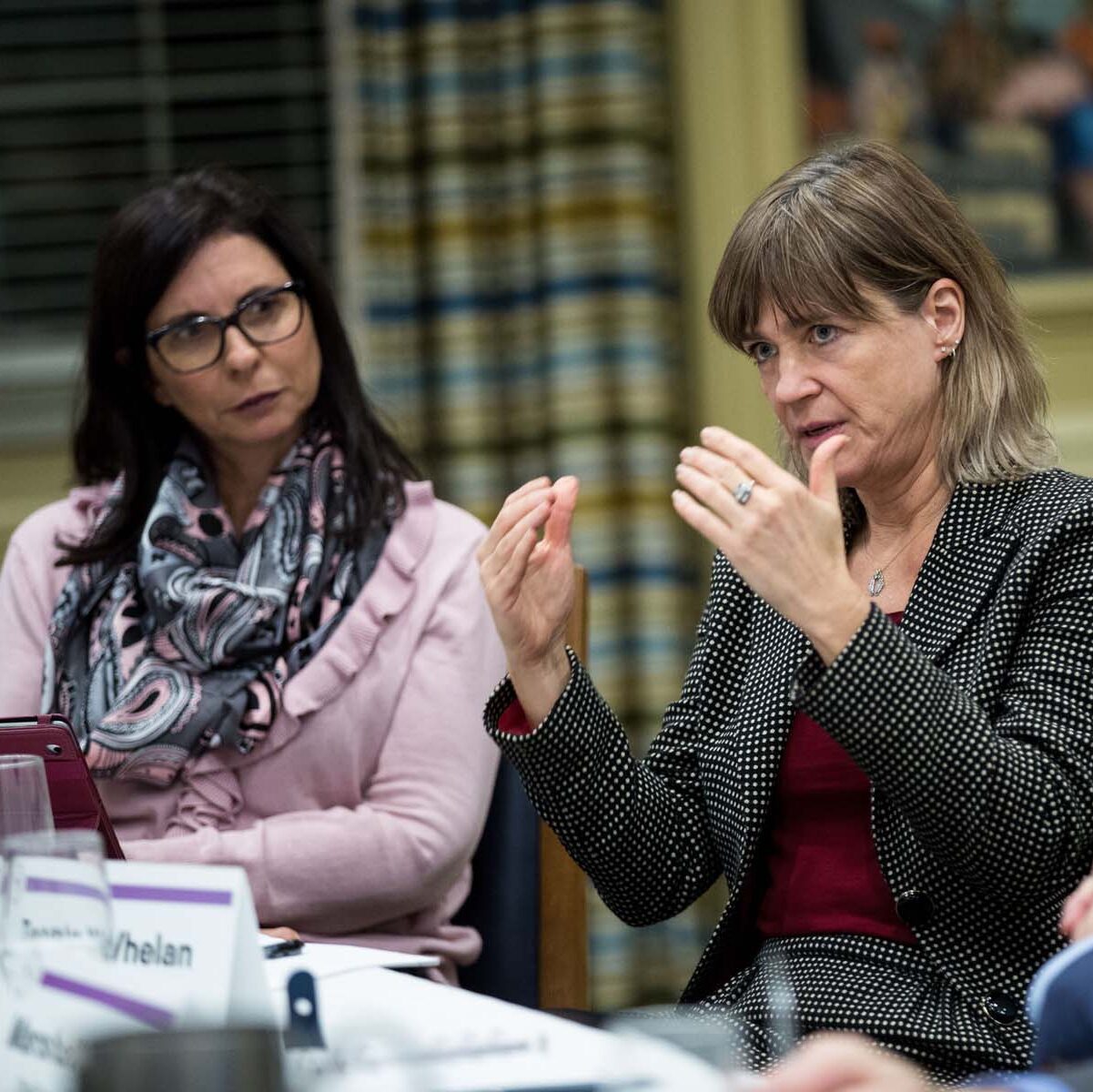


Over decades of advising C-suite leaders through transformation, crisis and reinvention, one pattern has remained constant: organizations that thrive tend to focus on foundational strength. Market volatility, geopolitical tension, regulatory scrutiny, and now AI have placed extraordinary demands on CEOs and their teams. In periods of intense pressure, effective leadership depends on the systems that shape decisions and keep the organization moving forward.
Yet these foundations are often overlooked–supporting execution day after day, until pressure rises and the strain begins to show. The strongest leaders act before the gaps widen, reinforcing the fundamentals early so their organizations can absorb strain and maintain momentum.
To lead effectively through complexity, CEOs must reinforce the core structures that drive alignment, execution, and long-term performance. These elements form the hidden architecture of leadership, shaping how work gets done, how teams operate, and how decisions are made.
The first foundation is a management operating system, the framework that underpins how the business runs. A well-built operating system brings rhythm and discipline, while empowering leaders and teams to focus on what matters most. It defines how priorities are set, how decisions are made, and where accountability sits, allowing leaders to manage growing demands at scale without relying on constant personal oversight.
As organizations evolve—through growth, transformation or increased complexity—those without a clear operating model often find their systems and people under pressure. Priorities blur, decisions slow, and accountability slips. A strong operating system keeps the enterprise aligned and execution on track, even as demands increase.
This system includes repeatable mechanisms for expectation-setting: 1) defining what good looks like across solo and coordinated work; 2) signaling leadership style and proactively clarifying preferences to reduce ambiguity; and 3) continuously updating direction as priorities shift. Crucially, these mechanisms live within real operating rhythms: weekly check-ins that sharpen execution, monthly reviews that track progress and unblock decisions, quarterly sessions that reset priorities, and annual planning that anchors longer-term direction.
Together these form a simple test for any initiative: Is there clarity on what success looks like? Is there a rhythm for coordination across leaders and functions? Is there visible accountability for decisions and outcomes?
Where those anchors are in place, execution scales predictably. Where they aren’t, teams default to guesswork and drift.
The second foundation is the senior leadership team itself. CEOs depend on the strength of this group, yet not all invest in how the team optimally functions together through decision-making and shared priorities. Across our work with senior leadership teams, we’ve seen that high-performing individuals do not automatically translate into a high-performing unit.
Case in point: In our work with a fast-growing technology company that had more than doubled in size, the senior team was struggling to operate as a cohesive unit. New executives and legacy leaders were unclear on decision rights, and collaboration was inconsistent. Through structured alignment sessions, operating rhythm design, and targeted coaching, the leadership team reset how it worked together. Clarity increased, trust deepened, and performance strengthened, contributing to a threefold rise in market value.
Senior teams thrive when their structure and process are intentionally designed. They need clarity on where decision rights sit, when subgroups should collaborate, and when the full team must engage. They also need the discipline to resolve disagreements and move forward once decisions are made. Deep alignment also depends on mechanisms that keep drift from sneaking in, including regular strategy and execution checks, deliberate engagement of the top 50-100 leaders where work is actually executed, and relentless communication and constant red-flag vigilance. When these practices are integrated into the team’s structure, the group operates with greater cohesion and can fully focus on enterprise priorities.
The third foundation is time; the capacity leaders carve out for reflection and judgment beyond day-to-day execution. The pace of modern leadership pushes many C-suite executives into a cycle of nonstop meetings, decisions and commitments—a “do loop” where they spend all their time executing and almost no time truly thinking, strategizing and prioritizing.
To do that well, leaders need protected time to step out of the cycle, to pause to review significant decisions, reset between engagements, and pressure-test their thinking with external perspectives. Building a quarterly reset day into the leadership rhythm, paired with an “automatic vs. manual” lens, keeps decisions intentional rather than reflexive. Without this, busyness replaces strategy and drift can set in.
Protecting this space for judgment matters; without it, leaders risk losing perspective and the enterprise risks losing focus.
Strong foundations give leaders the structure and space to operate with clarity, even in high-pressure environments. The most effective leaders we’ve worked with treat these fundamentals as non-negotiable. Those that redesign how they operate don’t just prevent burnout—they unlock multiplier effects, doing more with their energy and focus. They invest early, before issues emerge, because they know that strong foundations are what make strong leadership possible.
0

1:00 - 5:00 pm
Over 70% of Executives Surveyed Agree: Many Strategic Planning Efforts Lack Systematic Approach Tips for Enhancing Your Strategic Planning Process
Executives expressed frustration with their current strategic planning process. Issues include:
Steve Rutan and Denise Harrison have put together an afternoon workshop that will provide the tools you need to address these concerns. They have worked with hundreds of executives to develop a systematic approach that will enable your team to make better decisions during strategic planning. Steve and Denise will walk you through exercises for prioritizing your lists and steps that will reset and reinvigorate your process. This will be a hands-on workshop that will enable you to think about your business as you use the tools that are being presented. If you are ready for a Strategic Planning tune-up, select this workshop in your registration form. The additional fee of $695 will be added to your total.

2:00 - 5:00 pm
Female leaders face the same issues all leaders do, but they often face additional challenges too. In this peer session, we will facilitate a discussion of best practices and how to overcome common barriers to help women leaders be more effective within and outside their organizations.
Limited space available.

10:30 - 5:00 pm
General’s Retreat at Hermitage Golf Course
Sponsored by UBS
General’s Retreat, built in 1986 with architect Gary Roger Baird, has been voted the “Best Golf Course in Nashville” and is a “must play” when visiting the Nashville, Tennessee area. With the beautiful setting along the Cumberland River, golfers of all capabilities will thoroughly enjoy the golf, scenery and hospitality.
The golf outing fee includes transportation to and from the hotel, greens/cart fees, use of practice facilities, and boxed lunch. The bus will leave the hotel at 10:30 am for a noon shotgun start and return to the hotel after the cocktail reception following the completion of the round.